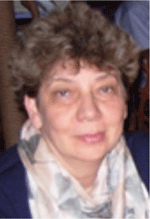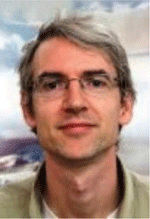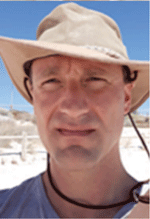Well log data analytics: overview of applications to improve subsurface characterisation
Irina Emelyanova A B , Chris Dyt A , M. Ben Clennell A , Jean-Baptiste Peyaud A and Marina Pervukhina AA CSIRO Energy, ARRC, 26 Dick Perry Avenue, Kensington, WA 6151, Australia.
B Corresponding author. Email: irina.emelyanova@csiro.au
The APPEA Journal 59(2) 874-878 https://doi.org/10.1071/AJ18100
Accepted: 1 February 2019 Published: 17 June 2019
Abstract
Wireline log datasets complemented with core measurements and expert interpretation are vital for accurate reservoir characterisation. In many cases, effective use of this information for predicting rock properties requires application of advanced data analytics (DA) techniques. We developed non-linear prediction models by combining data- and knowledge-driven methods. These models were used for predicting total organic carbon and electro-facies from basic wireline logs. Four DA approaches were utilised: unsupervised, supervised, semi-supervised and expert rule based. The unsupervised approach implements ensemble clustering for detecting variations in sedimentary sequences of the subsurface. The supervised approach predicts rock properties from well logs by applying ensemble learning that requires core data measurements. The semi-supervised approach builds a decision tree for iterative clustering of well logs to locate a specific facies and uses criteria determined by a petrophysicist for making decisions at each tree node whether to continue or stop the partitioning. The expert rule based approach combines clustering techniques at individual wells with an expert’s methodology of interpreting facies to determine field-wide rock characterisation. Here we overview the developed models and their applications to log data from offshore and onshore Australian wells. We discuss the deep thinking–shallow learning versus shallow thinking–deep learning approaches in reservoir modelling and highlight the importance of close collaboration of data analysts with domain experts.
Keywords: artificial intelligence, domain expert knowledge, machine learning, seismic inversion, well log interpretation.

Dr Irina Emelyanova leads the team of Geoscience Data Analytics (GDA) at CSIRO Energy. She is a mathematician by training with extensive experience in development of data-driven solutions for time series prediction, spatiotemporal data modelling, data fusion and pattern recognition. Through advanced analytics the GDA team develops novel data-driven solutions for improving representation of vertical and spatial heterogeneity of subsurface in geophysical and petrophysical models. Dr Emelyanova started her career as a Research Scientist at the USSR Research and Industrial Institute of Prospecting Geophysics. She continued her research as a Postdoctoral Fellow at Edinburgh University, UK. Irina moved to Australia in 2000 to work for the University of Western Australia. Prior to CSIRO she was employed by WMC Resources Ltd as a Spatial Data Analyst. |

Dr Chris Dyt is an Applied Mathematician with 20 years of experience working in petroleum geology. Chris’ PhD in Astrophysics left him desiring to use his mathematics on a more practical application, and was lucky enough to join the University of Adelaide and develop a stratigraphic forward modelling code Sedsim. In 2000, CSIRO acquired the software and Chris joined as well. In the following years Chris has been fortunate enough to work across a broad range of modelling projects and is currently working in the Geoscience Data Analytics team based at the Australian Resources Research Centre in Western Australia. |

Dr Michael (Ben) Clennell is a Senior Principal Research Scientist in the area of rock physical properties. His research spans petrophysics, geomechanics, structural geology and marine and petroleum geology, applied to onshore and offshore oil and gas. Prior to joining CSIRO in 2003, Dr Clennell worked as a university researcher in the UK and Brazil, investigating the rates and roles of fluid flow in marine sediments, active tectonic processes at convergent margins, fault rock properties and the electrical and electrokinetic properties of sedimentary rocks. He has taught courses in petrophysics and rock physical properties, hydrogeology, and marine and petroleum geology. Dr Clennell has held a range of science and research management roles at CSIRO, initially developing laboratory systems for rock properties measurement, and later leading major projects in fault rock sealing and leakage, carbonate reservoir geomechanics and multiphysics, and coal petrophysics, among others. |

Dr Jean-Baptiste Peyaud is a Reservoir Geologist with a strong background in mineralogy, geochemistry and petrophysics. He was awarded his PhD in 2003 at the University of Paris XI (Orsay, France) and since then has been working in research and industry including a researcher position at CSIRO and as a Geoscientist at Baker Hughes. His fields of interests are the study of reservoir diagenesis, the prediction of reservoir properties away from the borehole, the evaluation of unconventional plays and geochemical logs. He published two patents on methods to improve the vertical resolution of vertical logs and communications on the application of clustering to the evaluation of shale plays. Dr Peyaud is currently working as an independent consultant and an Invited Researcher at CSIRO where he works on CO2 sequestration. |

Dr Marina Pervukhina is a Principal Geoscientist at CSIRO, working on rock physics and petrophysics of unconventional and seal shales. She specialises in stress field analysis, rock physics of sedimentary and hard rocks, modelling of shale elastic properties and estimation of hydraulic permeability from log data. Before moving to Australia, Marina worked in the Geological Survey of Japan in the Earthquake Prediction Group. Marina is an author of three book chapters, more than 50 journal papers in ISI journals and more than 70 conference papers. She is an Associate Editor of the journal Geophysics and an active member of the Federal Executive of Australian Society of Exploration Geophysicists. |
References
Emelyanova, I., Pervukhina, M., Clennell, M. B., and Dewhurst, D. N. (2016). Applications of standard and advanced statistical methods to TOC estimation in the McArthur and Georgina basins, Australia. The Leading Edge 35, 51–57.| Applications of standard and advanced statistical methods to TOC estimation in the McArthur and Georgina basins, Australia.Crossref | GoogleScholarGoogle Scholar |
Emelyanova, I., Pervukhina, M., Clennell, M. B., and Dyt, C. (2017). Unsupervised identification of electrofacies employing machine learning. In ‘79th EAGE Conference and Exhibition 2017 –Workshops: WS01 Data Science for Geosciences, Paris, France, 12–16 June 2017’.
Kemper, M., and Gunning, J. (2014). Joint inversion and facies identification - seismic inversion redefined. First Break 32, 89–95.
Maiti, S., Tiwari, R., and Kumpel, H.-J. (2007). Neural network modelling and classification of lithofacies using well log data: a case study from KTB borehole site. Geophysical Journal International 169, 733–746.
| Neural network modelling and classification of lithofacies using well log data: a case study from KTB borehole site.Crossref | GoogleScholarGoogle Scholar |
Moghadasi, L., Ranaee, E., Inzoli, F., and Guadagnini, A. (2017). Petrophysical well log analysis through intelligent methods. In ‘SPE Bergen One Day Seminar, Bergen, Norway, 5 April 2017’, p. 11.


